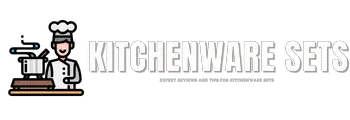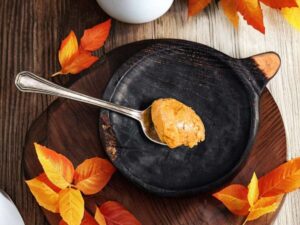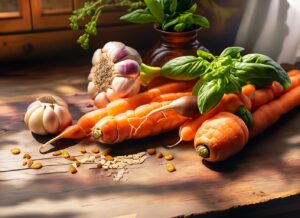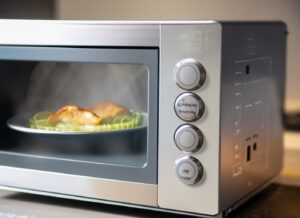Are you struggling to determine what half of 2/3 cup is in cooking? Precision in measurements can make or break a recipe, especially when scaling down or adjusting quantities. Half of 2/3 cup is 1/3 cup, or equivalently 5 tablespoons and 1 teaspoon.
But what if you don’t have a 1/3 cup measure handy, or you need to make other conversions in your recipe? In this blog post, we’ll explore not only how to accurately measure half of 2/3 cup but also practical tips for converting measurements with ease. From understanding fractions to alternative techniques and visual aids, you’ll gain all the tools needed for precise and hassle-free cooking. Dive in to discover how these insights can elevate your cooking and baking skills.
Key Facts:
- Half of 2/3 cup equals 1/3 cup or 5 tablespoons plus 1 teaspoon.
- Accurate measurements are crucial, especially in baking.
- Converting to tablespoons can make halving easier.
- Visual guides and tools can help with measurement accuracy.
- Understanding fractions is key to recipe scaling.
What is Half of 2/3 Cup in Cooking?
When it comes to cooking and baking, precision is key. Understanding how to halve measurements like 2/3 cup can make the difference between a culinary masterpiece and a kitchen disaster. So, let’s dive right in and demystify this common cooking conundrum.
Half of 2/3 cup is equal to 1/3 cup. This straightforward answer is your go-to solution when you need to quickly halve a recipe that calls for 2/3 cup of an ingredient. But what if you don’t have a 1/3 cup measure on hand? Don’t worry, I’ve got you covered with alternative measurements that will ensure your recipe stays on track.
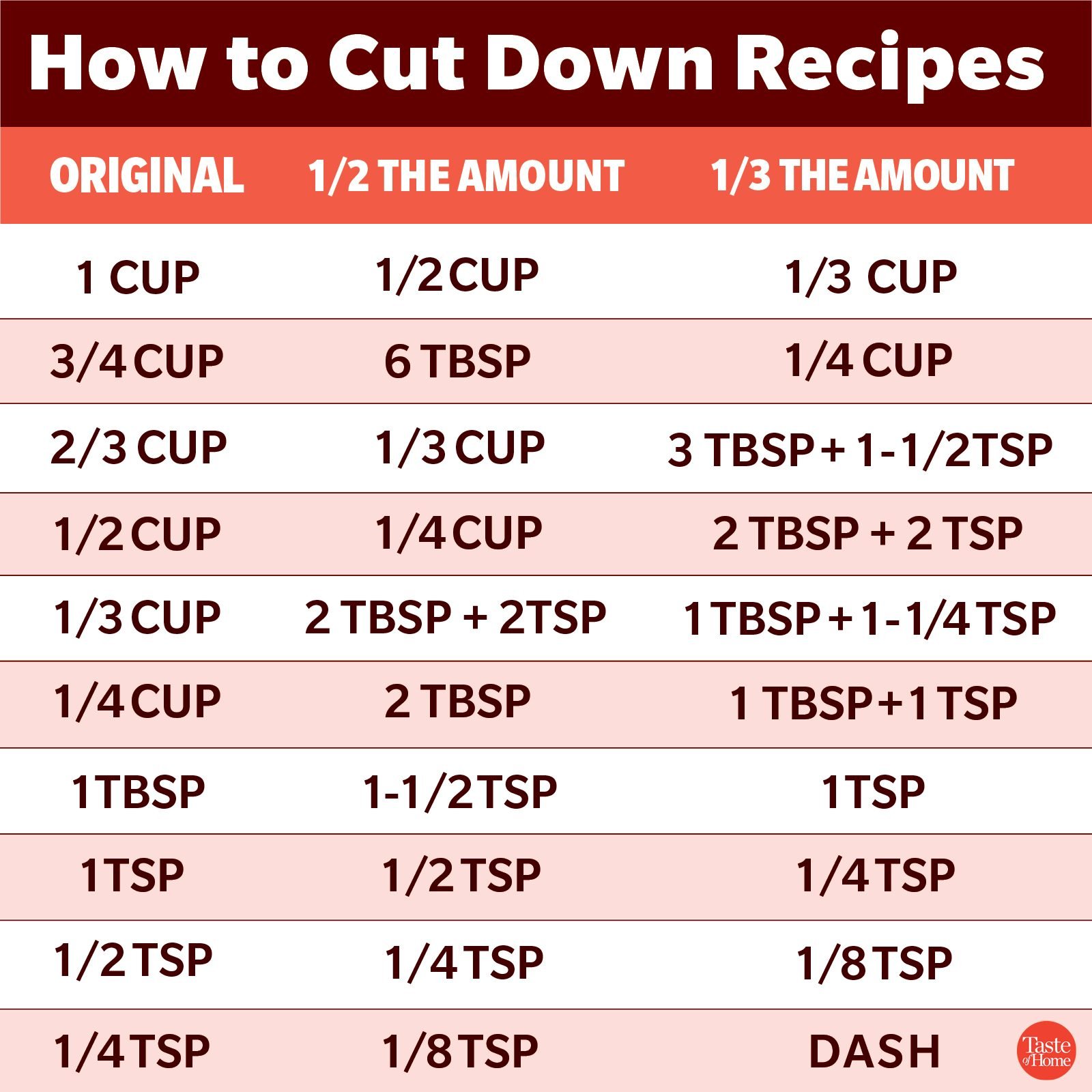
Breaking Down the Measurement
To fully grasp this concept, let’s break it down:
- In tablespoons: Half of 2/3 cup is equivalent to 5 tablespoons plus 1 teaspoon.
- In fluid ounces: It’s approximately 2.6 fluid ounces.
- In milliliters: For those who prefer metric, it’s about 79 milliliters.
Understanding these equivalents gives you flexibility in the kitchen, especially when you’re working with recipes from different parts of the world or scaling recipes up or down.
Why Accurate Measurements Matter
You might be wondering, “Is it really that important to be so precise?” The answer is a resounding yes, especially in baking. Baking is a science, and even small variations in measurements can affect the texture, rise, and overall success of your baked goods.
For cooking, while there’s often more room for improvisation, accurate measurements ensure consistency in flavor and texture. This is particularly important when you’re:
- Trying a new recipe for the first time
- Cooking for a large group
- Preparing dishes that require a specific consistency (like sauces or doughs)
By mastering these measurements, you’re setting yourself up for culinary success every time you step into the kitchen.
Understanding Fractions and Cups in Cooking
Before we dive deeper into the specifics of halving 2/3 cup, it’s crucial to understand the basics of cooking measurements and how fractions work in the kitchen. This knowledge forms the foundation for all your culinary adventures.
Basics of Cooking Measurements
In the world of cooking, we encounter various units of measurement. The most common in American recipes are:
- Cups
- Tablespoons (tbsp)
- Teaspoons (tsp)
- Fluid ounces (fl oz)
Each of these has its place in recipes, and understanding their relationships is key to becoming a confident cook. Here’s a quick reference table:
| Measurement | Equivalent |
|---|---|
| 1 cup | 16 tbsp |
| 1 tbsp | 3 tsp |
| 1/4 cup | 4 tbsp |
| 1/3 cup | 5 tbsp + 1 tsp |
| 1/2 cup | 8 tbsp |
| 2/3 cup | 10 tbsp + 2 tsp |
This table is your secret weapon for quick conversions in the kitchen. Keep it handy, and you’ll never be stumped by a recipe’s measurements again!
Converting Fractions in Cooking
Now, let’s talk about fractions. In cooking, we often encounter measurements like 1/2, 1/3, or 2/3 of a cup. Converting these fractions is a skill that will serve you well in your culinary journey.
To convert fractions, remember this simple rule: When halving a fraction, double the bottom number (denominator). So, half of 2/3 becomes 1/3. It’s that simple!
Here are some common fraction conversions you might encounter:
- Half of 1/2 cup = 1/4 cup
- Half of 1/3 cup = 1/6 cup
- Half of 3/4 cup = 3/8 cup
Practice these conversions, and soon they’ll become second nature. You’ll find yourself effortlessly adjusting recipes to suit your needs.
Why Accurate Measurement Matters
I can’t stress enough the importance of accurate measurements in cooking and baking. While cooking often allows for some flexibility, baking is a precise science. Even small variations can lead to significant changes in the final product.
Consider this: Using just a tablespoon too much flour in a cake recipe can result in a dry, dense cake instead of a light, fluffy one. On the flip side, too little flour in a bread recipe can lead to a sticky, unworkable dough.
Accurate measurements ensure:
- Consistency: Your dishes will turn out the same way every time.
- Balance of flavors: Especially important in complex recipes with multiple ingredients.
- Proper texture: Crucial for baked goods and dishes like custards or sauces.
- Success in new recipes: When trying something for the first time, following measurements precisely gives you the best chance of success.
Remember, cooking is an art, but baking is a science. Embrace the precision, and you’ll see your culinary skills soar!
Converting Half of 2/3 Cup
Now that we’ve laid the groundwork, let’s focus on the star of our show: converting half of 2/3 cup. This seemingly tricky measurement is actually quite simple once you know the tricks.
Simplified Measurement: Half of 2/3 Cup
As we’ve established, half of 2/3 cup is 1/3 cup. This is the simplest and most straightforward way to express this measurement. If you have a 1/3 cup measure in your kitchen, you’re all set!
Using 1/3 Cup
Using a 1/3 cup measure is the easiest way to get an accurate half of 2/3 cup. Simply fill it once, and you’re done. No complicated math or conversions needed.
Practical Applications
In real-world cooking scenarios, you might encounter recipes that call for 2/3 cup of an ingredient, but you only want to make half the recipe. In these cases, reaching for your 1/3 cup measure is your best bet.
For example, if a cookie recipe calls for 2/3 cup of chocolate chips and you’re halving the recipe, you’ll use 1/3 cup of chocolate chips. Simple and effective!
Conversion to Tablespoons and Teaspoons
But what if you don’t have a 1/3 cup measure? No problem! We can break this down into smaller units that are more commonly found in every kitchen: tablespoons and teaspoons.
Detailed Conversion Process
Here’s how we convert half of 2/3 cup to tablespoons and teaspoons:
- First, remember that 2/3 cup equals 10 tablespoons plus 2 teaspoons.
- To halve this, we simply divide these measurements by 2.
- Half of 10 tablespoons is 5 tablespoons.
- Half of 2 teaspoons is 1 teaspoon.
Therefore, half of 2/3 cup equals 5 tablespoons plus 1 teaspoon.
Practical Usage in Cooking
This conversion is incredibly useful in everyday cooking. Many recipes call for measurements in tablespoons and teaspoons, making this knowledge invaluable.
For instance, if you’re making a salad dressing that calls for 2/3 cup of olive oil, but you want to make a smaller batch, you can easily measure out 5 tablespoons plus 1 teaspoon of oil.
Visual Guide for Better Understanding
To help visualize this conversion, imagine your measuring spoons laid out:
[1 Tbsp] [1 Tbsp] [1 Tbsp] [1 Tbsp] [1 Tbsp] [1 tsp]This visual representation can be a helpful memory aid when you’re in the middle of cooking and need to quickly recall the conversion.
Conversion to Fluid Ounces
For those who prefer to work with fluid ounces or are using recipes from regions that favor this measurement, it’s helpful to know the fluid ounce equivalent.
Understanding Fluid Ounces
A fluid ounce is a unit of volume commonly used in the United States for measuring liquids. It’s important to note that a fluid ounce is different from an ounce by weight, which is used for dry ingredients.
Conversion Process
To convert half of 2/3 cup to fluid ounces:
- First, know that 1 cup equals 8 fluid ounces.
- 2/3 of 8 fluid ounces is approximately 5.3 fluid ounces.
- Half of 5.3 fluid ounces is approximately 2.65 fluid ounces.
Therefore, half of 2/3 cup is approximately 2.65 fluid ounces.
Practical Applications
This conversion is particularly useful when working with liquid ingredients or when using measuring tools marked in fluid ounces. For example, if you’re making a cocktail recipe that calls for 2/3 cup of juice, but you want to make a single serving, you’d use 2.65 fluid ounces of juice.
Remember, in cooking, it’s often okay to round to the nearest convenient measurement. In this case, you could use 2.5 or 2.75 fluid ounces without significantly affecting the recipe.
Alternative Measurement Techniques
While precise measurements are crucial, especially in baking, there are times when you might need to improvise or use alternative methods. Let’s explore some techniques that can come in handy when you’re in a pinch.
Using Measuring Cups and Spoons
Standard measuring cups and spoons are the most reliable tools for accurate measurements. However, if you don’t have the exact size you need, you can combine measurements to achieve the desired amount.
For half of 2/3 cup, you can:
- Use a 1/3 cup measure (as we’ve discussed)
- Use a 1/4 cup measure twice, then remove 1 tablespoon
Remember, the goal is to get as close as possible to the correct measurement while using the tools you have available.
Visual and Practical Tips
Sometimes, you might need to estimate measurements without proper tools. While this isn’t ideal for baking, it can work for many cooking scenarios. Here are some visual cues to help you:
- For 1/3 cup: Imagine an egg. The volume of a large egg without its shell is about 1/4 cup. Add a bit more to visualize 1/3 cup.
- For tablespoons: A typical dinner spoon is close to a tablespoon. It’s not exact, but it can work in a pinch.
- For teaspoons: A regular teaspoon from your cutlery set is often close to a measuring teaspoon.
These visual cues can be lifesavers when you’re cooking without proper measuring tools.
Eyeballing Techniques for Experienced Cooks
As you gain experience in the kitchen, you’ll develop a sense for measurements. Many seasoned cooks can estimate measurements quite accurately just by eyeballing. Here are some tips to help you develop this skill:
- Practice with water: Use water to practice filling measuring cups and spoons. This helps you understand what different volumes look like.
- Use your hand: For some ingredients, your hand can be a useful measuring tool. For example, a cupped palm typically holds about 1/3 to 1/2 cup.
- Visualize common objects: A tennis ball is roughly 1/2 cup in volume. Half of that would be close to 1/4 cup.
Remember, while these techniques can be useful, they’re not substitutes for precise measurements in recipes that require exactness, like baking.
Additional Tips and Considerations
Mastering measurements is just the beginning. Let’s explore some additional tips and considerations that will elevate your cooking and baking skills.
Scaling Recipes
Understanding how to scale recipes up or down is a valuable skill in the kitchen. It allows you to adjust serving sizes to fit your needs.
How to Halve Other Ingredients
When halving a recipe, it’s not just the 2/3 cup measurement you need to consider. Here’s a quick guide for halving other common measurements:
| Original Amount | Halved Amount |
|---|---|
| 1 cup | 1/2 cup |
| 3/4 cup | 6 tablespoons |
| 1/2 cup | 1/4 cup |
| 1/4 cup | 2 tablespoons |
| 1 tablespoon | 1 1/2 teaspoons |
| 1 teaspoon | 1/2 teaspoon |
Practical Examples
Let’s apply this to a real recipe. Say you have a cookie recipe that serves 24, but you only want to make 12 cookies. Here’s how you’d adjust some common ingredients:
- If it calls for 1 cup of flour, you’d use 1/2 cup
- If it needs 2/3 cup of sugar, you’d use 1/3 cup
- For 1 egg, you’d use 1/2 egg (beat the egg and use half)
Remember, some ingredients don’t scale well. Spices, for instance, often need to be reduced by less than half to maintain flavor intensity.
Dry vs. Wet Ingredients
Understanding the difference between measuring dry and wet ingredients is crucial for recipe success.
Differences in Measurement Techniques
- Dry ingredients (like flour, sugar, or cocoa powder) should be measured using the “scoop and level” method. Scoop the ingredient into the measuring cup and level it off with a straight edge.
- Wet ingredients (like milk, oil, or honey) should be measured in a clear, liquid measuring cup. Place the cup on a flat surface and read the measurement at eye level.
Importance of Accuracy
Accurate measurements are particularly crucial when dealing with the balance between dry and wet ingredients. Too much flour in a cake batter, for instance, can result in a dry, dense cake. Conversely, too much liquid can lead to a soggy, undercooked center.
Accuracy in Baking
While cooking often allows for some flexibility in measurements, baking is a different story. The chemical reactions in baking require precise ratios of ingredients.
Why Precision is Crucial
In baking, each ingredient plays a specific role:
- Flour provides structure
- Sugar adds sweetness and affects texture
- Leavening agents (like baking powder) create rise
- Fats (like butter or oil) contribute to tenderness and moisture
Altering these ratios can significantly impact the final product. Even small measurement errors can lead to tough cookies, flat cakes, or dense bread.
Tips for Ensuring Accuracy
- Invest in quality measuring tools: A set of measuring cups and spoons is essential for any kitchen.
- Use the right tool for the job: Liquid measuring cups for liquids, dry measuring cups for dry ingredients.
- Level off dry ingredients: Use a straight edge to level off dry ingredients in measuring cups.
- Read liquid measurements at eye level: Place the measuring cup on a flat surface and bend down to read it at eye level.
- Don’t pack ingredients: Unless a recipe specifically calls for it (like “packed brown sugar”), avoid compressing ingredients into measuring cups.
- Sift when necessary: Some recipes call for sifted flour or powdered sugar. This aerates the ingredient and can significantly affect the final texture of your baked goods.
- Use a kitchen scale: For ultimate precision, especially in baking, consider using a kitchen scale to measure ingredients by weight rather than volume.
Visual Guide and Tools
To further enhance your understanding and make your cooking experience smoother, let’s explore some visual aids and essential tools for accurate measurements.
Conversion Charts and Tables
Having a handy conversion chart in your kitchen can be a game-changer. Here’s a comprehensive table that covers most common cooking conversions:
| US Cups | Metric | US Fluid Ounces | US Tablespoons | US Teaspoons |
|---|---|---|---|---|
| 1 cup | 240 ml | 8 fl oz | 16 tbsp | 48 tsp |
| 3/4 cup | 180 ml | 6 fl oz | 12 tbsp | 36 tsp |
| 2/3 cup | 160 ml | 5.3 fl oz | 10 tbsp + 2 tsp | 32 tsp |
| 1/2 cup | 120 ml | 4 fl oz | 8 tbsp | 24 tsp |
| 1/3 cup | 80 ml | 2.7 fl oz | 5 tbsp + 1 tsp | 16 tsp |
| 1/4 cup | 60 ml | 2 fl oz | 4 tbsp | 12 tsp |
This table can be particularly useful when you’re working with recipes from different parts of the world or when you need to quickly convert between measurement systems.
Recommended Measuring Tools
Having the right tools in your kitchen can make a world of difference. Here are some essential measuring tools every home cook should have:
- Dry Measuring Cups: A set typically includes 1/4, 1/3, 1/2, and 1 cup measures.
- Liquid Measuring Cups: Look for clear, heat-resistant cups with easy-to-read markings.
- Measuring Spoons: A standard set includes 1/4 tsp, 1/2 tsp, 1 tsp, and 1 tbsp.
- Kitchen Scale: For precise measurements, especially in baking.
- Adjustable Measuring Cup: Great for sticky ingredients like honey or peanut butter.
Investing in quality measuring tools will pay off in the long run with more consistent cooking results.
Creating Your Own Measurement Guide
While having conversion charts and proper tools is helpful, creating your own personalized measurement guide can be even more valuable. Here’s how you can make one:
- Use a notebook or digital document: Choose a format that works best for you.
- Start with common conversions: Write down the conversions you use most often.
- Add recipe-specific measurements: As you cook, note down any unique measurements or conversions you encounter.
- Include visual cues: For example, “1/4 cup = size of a large egg” or “1 tbsp = about the size of your thumb tip.”
- Keep it accessible: Place it somewhere easily visible in your kitchen or save it on your phone.
By creating and regularly updating this guide, you’ll develop a more intuitive understanding of measurements over time, making you a more confident and efficient cook.
Conclusion
Mastering cooking measurements, especially tricky ones like half of 2/3 cup, is a fundamental skill that can significantly elevate your culinary prowess. Let’s recap the key points we’ve covered:
- Half of 2/3 cup is equal to 1/3 cup or 5 tablespoons plus 1 teaspoon.
- Understanding fractions and their conversions is crucial for recipe scaling and adjustments.
- Different techniques can be used for measuring dry and wet ingredients.
- Precision is particularly important in baking due to the chemical reactions involved.
- Visual aids, proper tools, and personal measurement guides can greatly assist in accurate cooking measurements.
Remember, cooking is both an art and a science. While precision is important, especially in baking, don’t be afraid to experiment and trust your instincts as you gain more experience. The more you practice, the more intuitive these measurements will become.
I encourage you to apply these insights in your kitchen. Start by halving a favorite recipe or converting measurements in a dish you’ve always wanted to try. With each attempt, you’ll grow more confident in your ability to handle any measurement challenge that comes your way.
Cooking is a journey of continuous learning and improvement. Embrace the process, enjoy the experimentation, and most importantly, have fun in your culinary adventures!
FAQs About What is Half of 2/3 Cup in Cooking
Q: What is half of 2/3 cup for baking?
A: Half of 2/3 cup for baking is 1/3 cup. This is equivalent to 5 tablespoons plus 1 teaspoon, or approximately 2.65 fluid ounces.
Q: How do I measure 2/3 cup without a 2/3 measuring cup?
A: To measure 2/3 cup without a 2/3 measuring cup, you can use a 1/3 cup measure twice. Alternatively, you can use 10 tablespoons plus 2 teaspoons, which is equivalent to 2/3 cup.
Q: What is 25% and 50% and 75% of 2/3 cups and 3/4 cups?
A: For 2/3 cup:
25% = 2 tablespoons + 2 teaspoons
50% = 1/3 cup (5 tablespoons + 1 teaspoon)
75% = 1/2 cup
For 3/4 cup:
25% = 3 tablespoons
50% = 6 tablespoons (1/3 cup)
75% = 9 tablespoons (1/2 cup + 1 tablespoon)
Q: How to convert cups to tablespoons?
A: To convert cups to tablespoons, multiply the number of cups by 16. For example:
1 cup = 16 tablespoons
1/2 cup = 8 tablespoons
1/3 cup = 5 tablespoons + 1 teaspoon
1/4 cup = 4 tablespoons
Q: Tips for scaling down recipes accurately?
A: To scale down recipes accurately:
- Use a kitchen scale for precise measurements.
- Convert volume measurements to weight when possible.
- Be cautious with leavening agents and spices – they may not scale linearly.
- Write down your conversions before starting.
- Consider using smaller equipment for better results.
Summary
In this comprehensive guide, we’ve explored the intricacies of cooking measurements, focusing on the question “what is half of 2/3 cup in cooking.” We’ve learned that half of 2/3 cup is equal to 1/3 cup, or 5 tablespoons plus 1 teaspoon. This knowledge is crucial for accurately scaling recipes and ensuring consistent results in your culinary endeavors.
Throughout this post, we’ve emphasized the importance of precise measurements in cooking and baking, highlighting the differences between measuring dry and wet ingredients, and providing practical tips for achieving accuracy in the kitchen. We’ve also explored alternative measurement techniques and provided visual guides to enhance your understanding.
As you continue your culinary journey, remember that mastering measurements is just one aspect of becoming a great cook. Don’t be afraid to experiment, trust your instincts, and most importantly, enjoy the process of creating delicious meals. Happy cooking!
